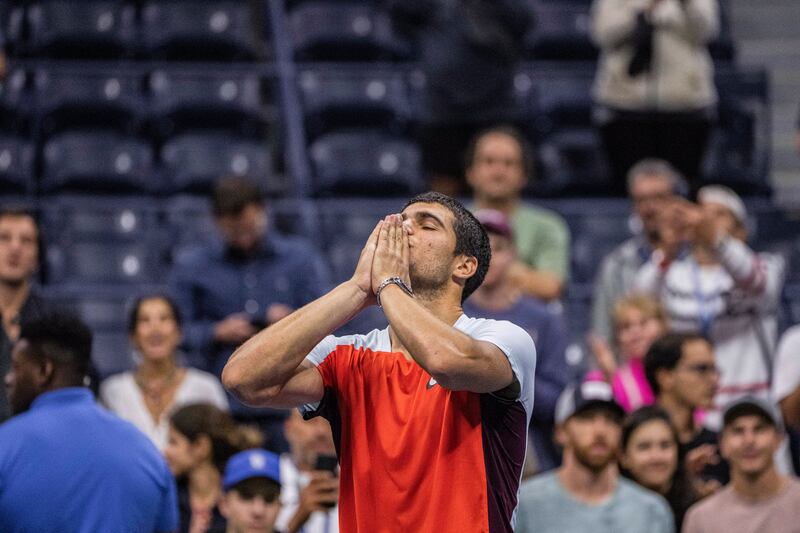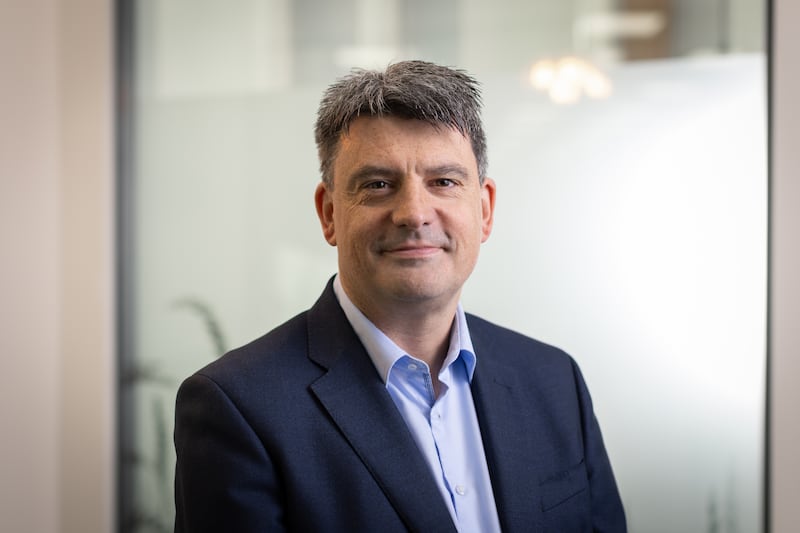The US Open victory party at Carlos Alcaraz’s Manhattan hotel wrapped up before 3am Monday, which was early by his standards at this round-the-clock Grand Slam event.
“I got to bed at 5.15am after the Cilic match, and 6am after the Sinner match,” he said rather wearily as he sat in the back seat of an SUV, shifting his gaze from his interlocutor to the streetscape outside the tinted windows.
He was rolling toward Times Square for a rendezvous with his new trophy, and upon arrival, he stepped on to the sidewalk in his jeans and blue-and-white sneakers and was soon holding the silverware high with the photographers – professional and amateur – clicking away as a crowd began to gather.
“Numero uno!” shouted someone in Spanish.
Alcaraz took note, just as he had after waking up Monday and looking at the updated ATP rankings on his phone. “I had to be sure,” he said.
At 19, Alcaraz is the youngest No 1 since the ATP rankings were created in 1973. That is quite a feat in a sport that has had plenty of prodigies: from Bjorn Borg to Mats Wilander, Boris Becker to Pete Sampras, to Alcaraz’s Spanish compatriot Rafael Nadal, who also won his first Major at age 19 at the 2005 French Open.
But Alcaraz’s meteoric rise to the top has not been simply because of his genius – though the word, which should be used very sparingly in tennis or anything else, does seem to apply in his acrobatic case.
His coronation also comes down to timing:
To Novak Djokovic’s refusal to be vaccinated for Covid-19, which kept him out of this year’s Australian Open and US Open and four Masters 1000 events in North America.
To Nadal’s limited schedule because of a series of injuries.
To the extraordinary situation at Wimbledon, which Djokovic won again in July but which earned him no ranking points; the tournament had been stripped of points by the men’s and women’s tours because of Wimbledon’s ban on Russian and Belarusian players over the war in Ukraine.
Alcaraz’s situation is radically different from the case of Nadal, who, as the long-time No 2, had to chase Roger Federer for years before finally securing the top ranking. Alcaraz has reached No 1 before the end of his second full season on tour and after winning his first Major title with a four-set victory against Casper Ruud on Sunday.

“Look, I don’t want to take credit away from myself,” Alcaraz said. “But it’s true that Rafa, Djokovic, Federer, they were in a period when they were all playing. I had the luck or whatever you want to call it that Djokovic could not play. Everybody has their reasons, but that is the reality. He could not play much for a while, and Rafa kept playing but not all year, either. But like I said, I don’t want to take credit away from myself. I have been playing all season, playing incredible matches and incredible tournaments, and I’ve worked really hard so that things like this could happen.”
At the end of 2021, Alcaraz was considered one of the brightest young talents in the game and was ranked No 32. Less than nine months later, he has won the Rio Open, Miami Open, Barcelona Open, Madrid Open and now his first Grand Slam title at the US Open. Along the way, he has beaten the old guard, defeating Nadal and Djokovic in Madrid, and the new wave, defeating 21-year-old Italian Jannik Sinner, 24-year-old American Frances Tiafoe and 23-year-old Ruud in New York.
Alcaraz’s latest duel with Sinner in the quarter-finals was the match of the tournament, played at close to full throttle for five sets in 5 hours, 15 minutes, with Alcaraz saving a match point in the fourth set.
It was also the latest-finishing match in US Open history, wrapping up at 2.50am, which is certainly notable but also a dubious honour even if the tournament presented him with a commemorative photo from that record-breaking match Sunday. Finishing at that hour (and going to sleep at 6am) is no way for an elite athlete to optimise performance or for a major sports event to maximise its reach.
What is clear is that Alcaraz’s three consecutive late-night marathons did not keep him from the championship. He beat Marin Cilic, Sinner and Tiafoe in five sets each before defeating Ruud, becoming the third man in the Open era to win a major after winning three consecutive five-setters. (Stefan Edberg did it at the 1992 US Open, and Gustavo Kuerten did it at the 1997 French Open.)
Like the elegant Edberg’s and the elastic Kuerten’s, Alcaraz’s powers of recovery were astonishing, and for now at least he plans to play in the Davis Cup for Spain later this week in Valencia after flying home.
In an interview with the Spanish publication El País, Juanjo Moreno, Alcaraz’s physiotherapist, said Alcaraz had a “good genetic predisposition that we have managed to bring to its maximum splendour.”
Moreno explained that the team paid close attention to Alcaraz’s hydration and energy replenishment during matches, which included the ingestion of caffeine, a legal supplement.
But Moreno said post-match recovery was the key: focusing on the use of a stationary bike, hot-and-cold contrast baths, massage and what he calls the “four Rs.” Those are “rehydration, replenishment of muscle glycogen, restoration of lost amino acids and recovery for the immune system.”
Quality sleep is also essential. “The other day, we helped him with a sleep supplement because we had given him a lot of caffeine,” Moreno told El País.
But Alcaraz said Monday that other less-scientific factors were also in play. “I’m 19 years old,” he said with a grin. “And I have worked a lot and very hard day to day on recovery, and I have a magnificent team.” He offered his thanks.
“But above all, it was going on the court with the adrenaline, the matches and everything,” he said. “You forget the pain. You forget the fatigue, and you push through.” – This article originally appeared in The New York Times.



















